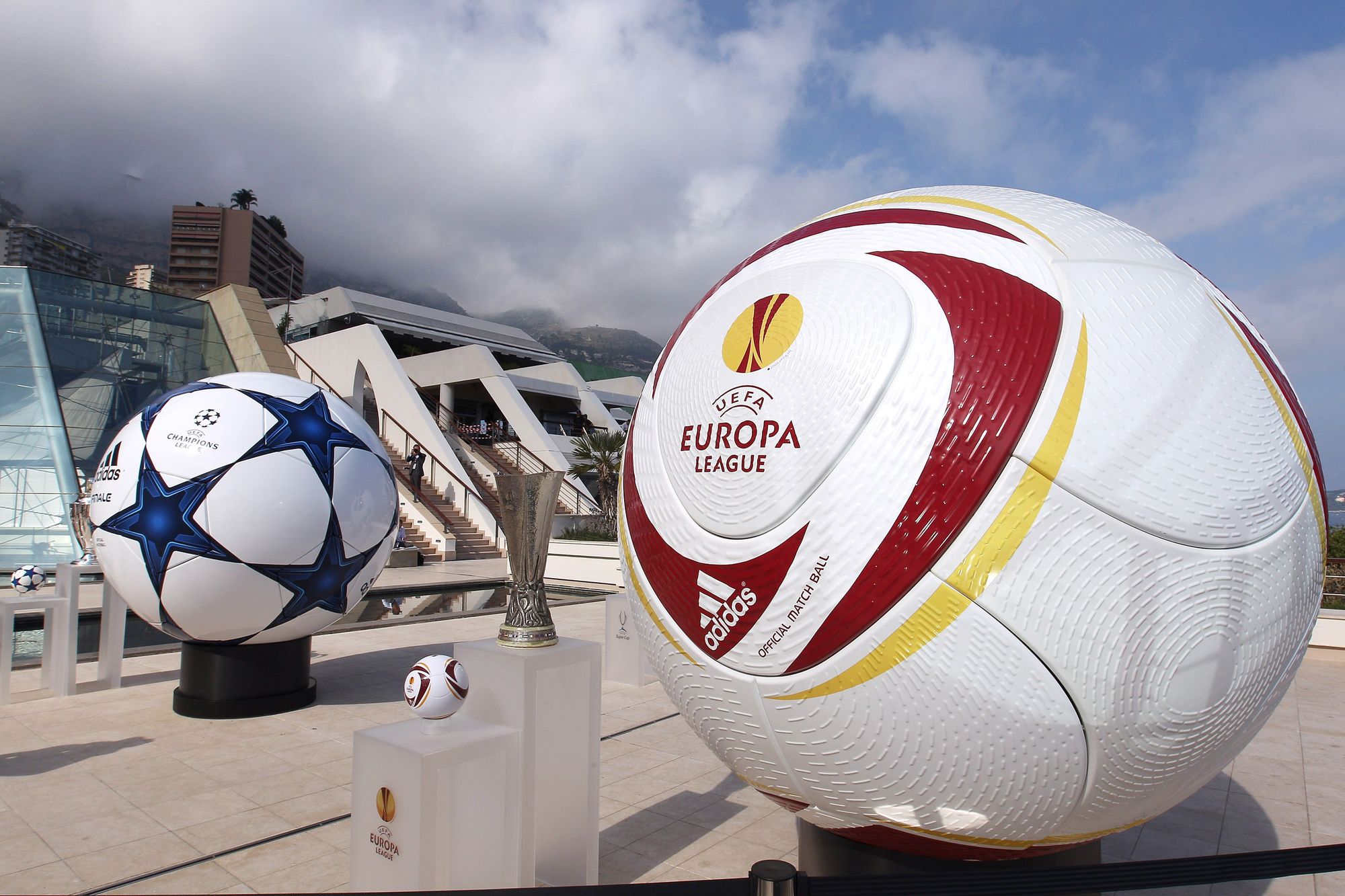UEFA Europa League: Where Underdogs Rise
In the realm of European football, the UEFA Europa League stands as a platform where underdogs rise and shine, defying the odds and leaving their mark on the competition.

I. Introduction
The UEFA Europa League stands as the second European football competition, in terms of importance, after the UEFA Champions League, captivating fans worldwide with its unique charm and thrilling matches. While its sibling, the UEFA Champions League, often takes center stage, the Europa League has carved its own niche as a platform where underdogs rise and make their mark. This captivating tournament showcases the strength, determination, and resilience of teams often overshadowed by their more renowned counterparts. The Europa League serves as a stage where teams that may not have the same financial might or star-studded rosters can challenge the established order and create moments of sheer footballing brilliance. From small clubs representing lesser-known leagues to fallen giants looking for redemption, the Europa League provides an opportunity for these underdogs to shine on a European stage and etch their names in footballing history. The competition's allure lies not only in the quest for silverware but also in the narratives of unlikely heroes and breathtaking upsets, making it a celebration of the underdog spirit in the world of football.
II. The History of the Competition
The UEFA Europa League, known as the UEFA Cup until 2009, has a rich and storied history that dates back to its inception in 1971. The tournament was established as a successor to the Inter-Cities Fairs Cup, which ran from 1955 to 1971. The UEFA Cup aimed to create a competition that would allow clubs from across Europe to compete against each other and showcase their talents.
The inaugural UEFA Cup season saw 64 teams from 32 countries participate. Tottenham Hotspur emerged as the first champions after defeating Wolverhampton Wanderers in the final. Over the years, the tournament grew in popularity and stature, attracting a wide range of teams from different leagues across Europe.
In 2009, the competition underwent a rebranding and became the UEFA Europa League, adopting a new format and logo. The change aimed to align the tournament with UEFA's vision of promoting unity and diversity in European football. The UEFA Europa League follows a rigorous qualification process, with teams from different domestic leagues earning their spots based on their performance in their respective leagues and domestic cup competitions. The competition features a group stage followed by a knockout stage, culminating in a thrilling final.
Throughout its history, the UEFA Europa League has produced countless memorable moments. From stunning comebacks and dramatic last-minute goals to surprise victories by underdog teams, the tournament has consistently delivered exciting and unpredictable matches. It has also served as a platform for emerging talents to showcase their skills and catch the attention of top clubs. Notable clubs such as Sevilla, Manchester United, Liverpool, and Atletico Madrid have enjoyed success in the Europa League, winning multiple titles and leaving their mark on the competition's history.
Overall, the UEFA Europa League holds a special place in European football, providing a platform for clubs to compete at a continental level and giving fans thrilling matches and captivating storylines. The tournament's rich history and continuous evolution make it a cherished competition that celebrates the spirit of competition and the rise of underdog teams.
III. Qualification and Group Stage
The qualification stage of the UEFA Europa League serves as the gateway for teams to earn their place in the tournament. It involves a series of rounds where clubs from different countries and leagues compete for the limited spots available. This stage not only showcases the diversity of European football but also provides an opportunity for underdog teams to make their mark on the continental stage.
The qualification process begins with teams that have not qualified for the UEFA Champions League but still aspire to compete at the European level. The number of spots allocated to each league depends on their UEFA coefficient, which reflects the league's past performances in European competitions. The qualification stage consists of several rounds, starting with the preliminary rounds and progressing to the first, second, and third qualifying rounds. Teams from lower-ranked leagues start in the preliminary rounds and face a series of knockout matches to advance. The higher-ranked leagues' representatives enter the competition at later stages.
The group stage of the UEFA Europa League is a highly anticipated phase of the competition, where teams from different countries and leagues come together to battle for a place in the knockout stage. This stage showcases thrilling matchups and memorable performances, with underdog teams often making their mark and surprising the football world. The group stage consists of 48 teams divided into 12 groups of four. Each team plays six matches, facing the other teams in their group home and away. The top two teams from each group advance to the knockout stage, while the third-placed teams drop down to compete in the UEFA Europa Conference League.
The group stage of the UEFA Europa League serves as a platform for underdog teams to shine and gain recognition. It offers them the opportunity to go head-to-head with some of Europe's best clubs, providing a stage to display their talent, resilience, and teamwork. The captivating performances and surprising results in the group stage are a testament to the magic and excitement of the competition, keeping fans on the edge of their seats and emphasizing the unpredictable nature of football.
IV. Knockout Stage
The UEFA Europa League knockout stage is the second phase of the competition, following the group stage. It consists of a series of two-legged ties played between the winners and runners-up of each group. The knockout stage begins with the round of 16, where the top two teams from each group are paired against each other based on their group stage performances.
The knockout ties are played over two legs, with each team playing one leg at home and one away. The team that scores the most goals over the two legs advances to the next round. In the event of a tie on aggregate goals, away goals were used as a tiebreaker, until the 2021-2022 season. Since then, in case of an equal number of goals scored after the two legs, the tie continues with extra time and penalty shootouts.
The draw for the knockout stage of the UEFA Europa League typically takes place in December after the group stage matches are completed. During the draw, the 16 teams that qualified for the knockout stage are drawn against each other to determine the matchups for the Round of 16. There are some rules that govern the draw process, such as teams from the same country or that were in the same group during the group stage cannot be drawn against each other. Additionally, the group winners are drawn against the runners-up, with the group winners playing the first leg of the tie away from home. Once the Round of 16 matches are completed, another draw takes place to determine the matchups for the quarterfinals, and this process continues until the final. The draw for the knockout stage is always highly anticipated and can have a significant impact on the teams' chances of advancing further in the competition.
For the 2021-22 to 2023-24, there is an extra Preliminary Knock-out Round where the 8 runners-up from the group stage play with the 8 third-placed teams from the Champions League group stage to determine who moves to the Knockout Phase, where the winners of the 8 UEL group stage awaits. Starting with the 2024-25 season UEFA is reorganizing the competitions, topic which we will cover in another article.
The knockout stage showcases remarkable individual performances, tactical battles, and thrilling comebacks. It is a stage where underdog teams have the opportunity to demonstrate their resilience, skill, and ability to compete at the highest level. The drama and excitement of the knockout stage make it a highlight of the UEFA Europa League, capturing the attention of fans around the world and providing unforgettable moments that will be etched in football history.
V. The Final
The UEFA Europa League final is the pinnacle of the competition, where the best teams from the knockout stage come face to face in a match of immense significance. It is a culmination of months of hard-fought battles and showcases the talent, determination, and ambition of the participating clubs. The final is a grand spectacle that captures the attention of football fans worldwide. It is played in a prestigious venue, often a renowned stadium in a major European city, adding to the aura and excitement surrounding the event. The final provides an opportunity for teams, particularly underdogs, to etch their names in history and lift a coveted trophy.
The match is played over 90 minutes, with extra time and a penalty shootout if necessary to determine a winner. The winning team is crowned the champion of Europe and receives the Europa League trophy. The UEFA Europa League final has been hosted in various iconic locations throughout its history, showcasing the rich diversity of European football. The final has taken place in historic cities and renowned stadiums, adding to the grandeur and allure of the event. From Amsterdam's Amsterdam ArenA to Turin's Juventus Stadium, the final has graced some of Europe's most storied football venues. It has been held in vibrant cities like Dublin, Warsaw, Basel, Bucharest and Istanbul, each providing a unique backdrop for the pinnacle of the competition. The choice of locations reflects the tournament's aim to promote football across Europe and engage fans from different countries and cultures. These cities have embraced the final, welcoming supporters from all corners of the continent and creating an electric atmosphere.
For the winning team, lifting the UEFA Europa League trophy is a moment of immense joy and validation. It marks the culmination of a challenging campaign and serves as a testament to their resilience and talent. The final leaves a lasting impression on both the players and the fans, creating memories that will be cherished for years to come.
VI. Notable Moments
The UEFA Europa League has provided us with numerous unforgettable moments that epitomize the spirit of underdog teams rising to the occasion. These moments have left an indelible mark on the history of the competition and continue to inspire fans around the world.
One such notable moment occurred in the 2009-2010 season when Fulham, a team not accustomed to European success, embarked on an extraordinary journey. They staged a series of comebacks, including a remarkable comeback from a 4-1 deficit against Juventus in the round of 16. Fulham's Bobby Zamora scored a dramatic winner in the dying minutes, propelling the club to the quarterfinals for the first time in their history.
In the 2015-2016 season, Sevilla showcased their dominance in the competition, winning their third consecutive title. Their triumph in the final against Liverpool saw a stunning comeback from a 1-0 deficit, with Sevilla scoring three goals in the second half to secure a 3-1 victory. This remarkable feat solidified Sevilla's reputation as a force to be reckoned with in the UEFA Europa League.
Another memorable moment came in the 2017-2018 season when RB Salzburg, a relative underdog, defied the odds and staged a thrilling comeback against Lazio. Trailing 4-2 from the first leg, RB Salzburg produced an extraordinary performance in the second leg, winning 4-1 to secure a 6-5 aggregate victory. The match showcased the never-say-die attitude of underdog teams and the unpredictable nature of the competition.
Individual performances have also left their mark on the UEFA Europa League. The likes of Radamel Falcao, Aritz Aduriz, and Antoine Griezmann have produced stunning displays of skill and goalscoring prowess, captivating fans with their exceptional performances on the European stage. These notable moments serve as a testament to the excitement and drama that the UEFA Europa League consistently delivers.
VII. Statistics and records
The UEFA Europa League has a rich history filled with remarkable statistics and records that highlight the achievements of teams, players, and managers. Here are some notable statistics and records from the competition:
Most Titles: Sevilla holds the record for the most UEFA Europa League titles, having won the tournament seven times (2006, 2007, 2014, 2015, 2016, 2020, 2023).
Countries with most trophies: Spain (14), England (9), Italy (9)
Most Goals: Radamel Falcao, playing for Porto, scored a record 17 goals in the 2010-2011 season, setting the record for the most goals scored by an individual player in a single UEFA Europa League campaign.
Most Appearances in the knock-out phase: The record for the most appearances in the UEFA Europa League Knockout Phase is shared by four time winner Kevin Gameiro (Sevilla, Atletico, Valencia) and four-time finalist Eduardo Salvio (Atletico, Benfica). Both players gathered 39 knockout phase games, closely followed by Rui Patricio (Sporting CP, Wolves, Roma) with 38.
Most goals in the Europa League knockouts: 20 Radamel Falcao (Porto, Atletico), 19 Kevin Gameiro (Sevilla, Atletico, Valencia), 18 Alexandre Lacazette (Lyon, Arsenal)
Fastest Goal: In 2015, Vitolo of Sevilla scored the fastest goal in the UEFA Europa League, finding the net after just 13.21 seconds against Villareal.
Most Successful Manager: Unai Emery has been the most successful manager in the UEFA Europa League, winning the title four times with Sevilla (2013-2014, 2014-2015, 2015-2016) and once with Villarreal (2020-2021).
These statistics and records demonstrate the incredible feats achieved by teams, players, and managers in the UEFA Europa League, making it a competition filled with thrilling moments and remarkable achievements.
VIII. Conclusion
In the realm of European football, the UEFA Europa League stands as a platform where underdogs rise and shine, defying the odds and leaving their mark on the competition. From the qualification stage to the final, the tournament has witnessed memorable moments, historic upsets, and extraordinary individual performances that have captured the hearts of football fans worldwide. Throughout its history, the Europa League has provided an avenue for lesser-known clubs to showcase their talent, challenging the established powers and creating moments of pure footballing magic. It is a competition that celebrates the spirit of determination, resilience, and passion, allowing underdog teams to etch their names in football history.

